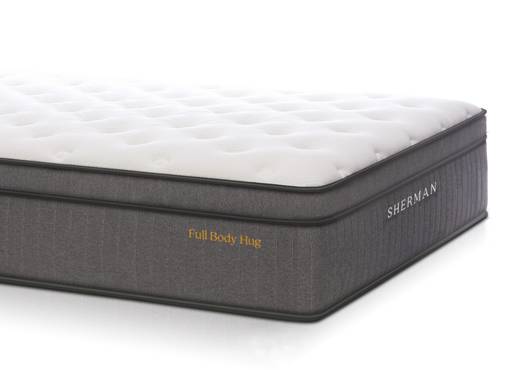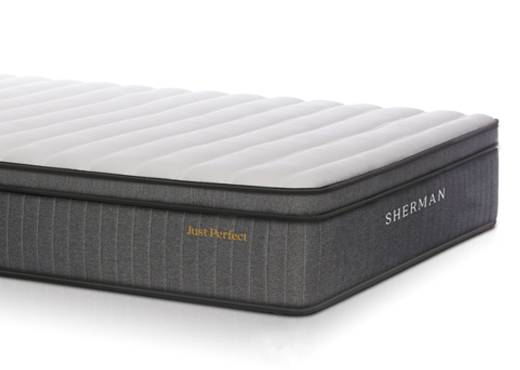OK, here’s the hard, cold truth about mattresses: they hold onto your body heat and they can get hot. Whilst some are definitely worse than others, the main culprit in the heat-holding department is foam, something that every mattress has.
Foam is made up of billions of open, multi-dimensional cells with rubber-like walls that capture and hold a sleeper’s body heat.
The more dense the foam (generally latex and visco elastic or memory foam), the more heat that the foam will retain. You shouldn’t let this stop you from buying a mattress which utilises these foams, as these are the best foams for comfort and longevity of comfort in a mattress. Read more about mattress foam here.
We know that mattresses (like woolly jumpers) don’t generate their own heat – it’s our bodies that are running at a constant temperature of around 37°c degrees. That’s pretty hot. If your body heat can escape from areas of your body that are not in contact with the mattress then heat will not build up in the first place.
If you find that your body heat is being trapped and you're waking up in a hot mess, you just need to make some simple adjustments:
DITCH THE DOONA
Just like a mattress holds your body heat, so does a doona or quilt. Usually a doona consists of polyester fibre and just like polyester clothing, your skin will struggle to breathe underneath it and your body heat will not be able to disperse. Even doonas with a pure wool filling will hold a lot of heat, just like a pure wool jumper does. When you wake up because you’re overheating, you tend to kick the doona off so that the top part of your body can cool down quickly. Of course, the underside of your body won’t, so the poor mattress gets the blame. But your best bet is to not to let the body heat build-up in the first place. Use lighter layers of bedding in natural fabrics so that any excess heat can disperse through these as you sleep. A good choice for bedding would be quality cotton sheets with a thread count of 300-400 (Google why the old-1000-thread-count story is a bogus one) and light, pure wool blankets or thin quilts filled with a cotton wadding.
DON'T USE A WATERPROOF MATTRESS PROTECTORS
(Unless needed for small children or invalids). If a mattress protector claims to be waterproof, then it must have some sort of plastic lining. This will prevent your body heat from dispersing underneath you and will definitely make you overheat. We always recommend a good mattress protector to prolong the life of your mattress but that doesn’t extend to those that market themselves as waterproof. Instead, opt for a cotton or poly/cotton blend mattress protector.
AVOID UNDERLAYS
Don't be trapped by clever marketing that a woolen underlay will keep you cool as you sleep - you wouldn't wear a woolen jumper on a hot day, no matter what you saw in an ad. Any type of underlay that you have on the bed will simply provide more insulation to trap your body heat - good in winter, not so good in summer.
Don't forget to remove your electric blanket when it's not needed. These have foil insulation linings that will bounce your body heat back up at you and can make you feel like you're burning up on a hot night.
DON'T BUY A SOLID FOAM MATTRESS
Once again, it’s foam that holds heat so a solid foam bed will be the worst choice for holding heat. A mattress that uses an innerspring unit for support is the best choice as the open spring unit won’t hold heat and will allow body heat to disperse away from you. Airflow throughout the mattress is another bonus that you get from an innerspring, so the mattress will be less likely to hold all sorts of nasties like dust mites and mould (this is a genuine problem for solid foam mattresses in warm climates).
WEAR LIGHT SLEEPWEAR (OR NONE AT ALL)
You have a golden opportunity every night to let your skin breathe, you may as well take advantage of it.
COOL DOWN YOUR BEDROOM
Today’s homes aren’t always well insulated, and our bedrooms are built on the outer perimeters of the house so that we can have bedroom windows. Unfortunately, that means your bedroom might just be one of the warmest rooms in the home and your mattress will be soaking up that warmth all day. Cool the room for at least half an hour before you go to bed with a blast of air conditioning or by opening the windows to allow the heat in the room to escape. Also, don’t position your bed up against the external walls of the room (usually the hottest walls as they are exposed to the outside temperature). You’re better off to sleep next to an internal wall which will naturally be cooler.
MAYBE TRY A FIRMER MATTRESS
If you’re a really hot sleeper and the steps above still don’t fix the issue, then you may be better off with a firmer style of mattress. That’s not to say that you need a mattress that feels like a rock but simply one that uses less foam in the comfort layers. There are many good mattresses on the market that utilise a softer spring, so even with less filling in the comfort layers, you’ll still get a comfortable and conforming mattress. As mentioned earlier, innerspring units are far superior to a foam core for allowing air flow through the mattress and for dispersing body heat. Our Firm But Fair mattress has firmer foams so that you feel that you’re sleeping more on top of the mattress, instead of in it.




